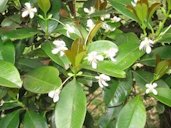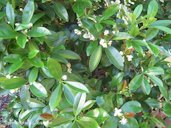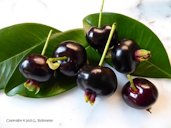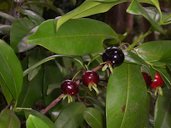| Grumichama - Eugenia brasiliensis | |||||||||||||||
|---|---|---|---|---|---|---|---|---|---|---|---|---|---|---|---|
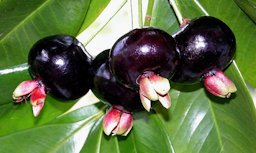 Fig. 1  Eugenia brasiliensis (Brazilian cherry, grumichama) 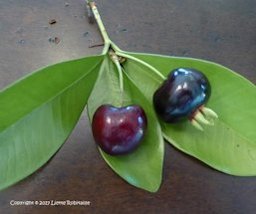 Fig. 2  Bing cherry on the left and grumichama (w/sepals) on the right  Fig. 3  E. brasiliensis (Brazilian cherry, grumichama), Kula Ace Hardware and Nursery, Maui  Fig. 4  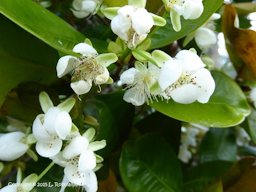 Fig. 5   Fig. 6  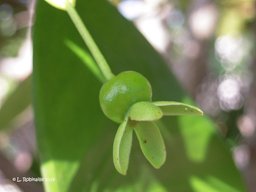 Fig. 10  Immature fruit 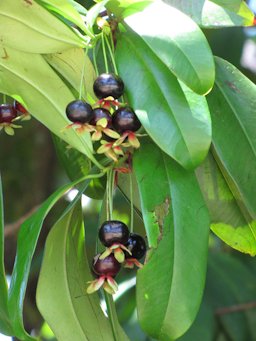 Fig. 11  Brazilian cherry, grumichama habit, Montrose Crater Rd Kula, Maui  Fig. 12  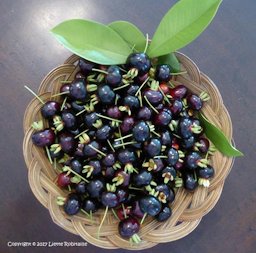 Fig. 13   Fig. 17  Seeds of E. brasiliensis 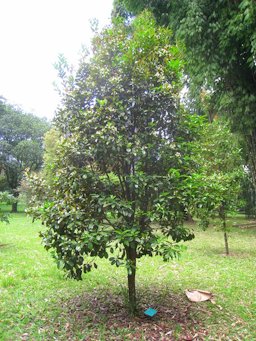 Fig. 18  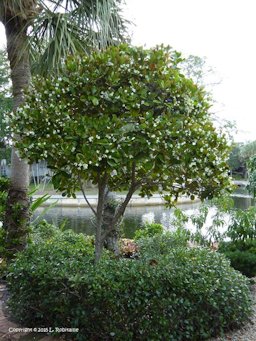 Fig. 19  Srasota, Florida  Fig. 20  Maintained as a bush to 6 feet for ease of harvesting  Fig. 21  In rows at Fairchild Tropical Botanic Garden  Fig. 22  Grumichama trunk and bark, Haiku, Maui |
Scientific
name Eugenia brasiliensis Lam. Common names English: Brazil cherry, Brazilian cherry, grumichama, red-fleshed grumichama, Spanish cherry; Brazil: cumbixaba, grumixama, grumichameira, grumixameira (Portuguese); Czech: hřebíčkovec Brazilský; Danish: Brasiliansk kirsebær; French: bois dè Nefle, cerisier du Brésil, jambosier du Brésil; German: Brasilianische Kirschmyrte; Spanish: grumichama, Ppomarosa forastera 11 Synonyms E. dombeyi (Spreng.) Skeels, Myrtus dombeyi Spreng., Stenocalyx brasiliensis O. Berg; E. brasiliensis var. erythrocarpa Cambess; E. brasiliensis var. leucocarpa Cambess; Stenocalyx brasiliensis var. erythrocarpa (Cambess.) O.Berg; Stenocalyx brasiliensis var. leucocarpa (Cambess.) O.Berg; E. bracteolaris Lam.; E. filipes Baill.; E. ubensis Cambess.; Myrtus grumixama Vell.; Stenocalyx ubensis (Cambess.) O.Berg 8 Relatives Cattley guava, Psidium cattleianum; guava, P. guajava; blue grape, Myrciaria vexator; jaboticaba, Myrciaria spp.; feijoa Feijoa sellowiana and other members of the genus Eugenia, which includes more than 30 species with edible fruits Family Myrtaceae (myrtle family) Origin Sub tropical areas of Brazil USDA hardiness zones 9b-10 Uses Fruit; landscape specimen; hedging Height 15-20 ft (4.5-6 m) Spread 10-12 ft (3-3.6 m) Plant habit Shrub or small tree; upright, compact growth habit 1 Growth rate Can grow at a rate of about two to three feet a year under normal conditions 4 Trunk/bark/branches Short-trunked; thin exfoliate bark 6 Pruning requirement Keep pruned to 10-12 ft (3-3.6 m) Leaves Evergreen; leaves persist for 2 years; shiny dark leaves; leathery texture; new growth is rosy-burgundy Flowers White; 100 white stamens, yellowish anthers; mid-March for the main flowering Fruit Looks like a Bing cherry; produces more fruit if the winter is a little chilly; borne on long stems in clusters; persistent white sepals Season Fruits several times a year; first crop is the largest; matures in April to May; one month from flowering 1 Light requirement Sun or part shade Soil tolerances Prefers deep, fertile, sandy loam; alkaline soils will cause deficiences: iron, manganese, and magnesium 4,5 pH preference 5.5-6.5 Drought tolerance Not tolerant Aerosol salt tolerance Not hightly salt tolerant; protect them from strong winds 4 Soil salt tolerance Fair; chlorotic on beach sands Cold tolerance 26° F (-3.33 °C) Plant spacing 15-20 ft (4.6-6 m) 2 Roots Shallow root system; mulch to help retain moisture in the soil Invasive potential * None reported Pest resistance Somewhat susceptible to the Caribbean fruit fly Known hazard None Reading Material Brazilian Cherry or Grumichama, University of Florida, Collier County pdf Grumichama, Fruits of Warm Climates Grumichama, Twelve Fruits Project, University of Hawai'i at Mānoa Eugenia dombeyi, PROSEA Foundation Eugenia dombeyi, Agroforestree Database Origin Native and wild in coastal southern Brazil especially in the states of Parana and Santa Catarina. 5 Eugenias, South American Berries, Sub-tropical Fruit Club of Qld Description Has been grown in Florida since 1911. The grumichama is a small, attractive tree that produces a a delicious, cherrylike fruit. Indeed, many regard this species as the premier member of the fruit-rich Eugenia genus. Although the fruit is small and is somewhat suscesptible to attack by the Caribbean fruit fly, the flavor is outstanding. For south Florida residents who yearn for a fruit resembling the northern sweet cherry, the grumichama represents an excellent choice. 3
Flowers Flowers develop on new growth. The flowers, borne singly in the leaf axils, are 1 in (2.5 cm) wide; have 4 green sepals and 4 white petals, and about 100 white stamens with pale-yellow anthers. 5
Fig. 7. E. brasiliensis in the San Paulo Botanical Garden Fig. 8. Grumichama bush in bloom Fig. 9. Spent flowers Fruit The long-stalked fruit is oblate, 1/2 to 3/4 in (1.25-2 cm) wide; turns from green to bright-red and finally dark-purple to nearly black as it ripens, and bears the persistent, purple- or red-tinted sepals, to 1/2 in (1.25 cm) long, at its apex. The skin is thin, firm and exudes dark-red juice. The red or white pulp is juicy and tastes much like a true subacid or sweet cherry except for a touch of aromatic resin. There may be 1 more or less round, or 2 to 3 hemispherical, hard, light-tan or greenish-gray seeds to 1/2 in (1.25 cm) wide and half as thick. 5 Fruit are born singly on new growth. 3 As non-climacteric fruits, it must be harvested ripe.
Varieties Three varieties have been distinguished, based on little more than fruit colour: — var. iocarpus Berg (= var. dombeyi): fruits deep violet; — var. erythrocarpus Berg: fruits red; — var. leucocarpus Berg: in Brazil becomes a large tree to 65 ft (20 m) high and has fruits with white flesh. It is not as common as the red-fleshed type. 5,9 Harvesting The tree is regarded as remarkable for the short period from flowering to fruiting. In Florida, it has been in full bloom in late April and loaded with fruits 30 days later. The crop ripens quickly over just a few days. 5 Propagation Most grumichamas in the nursery trade are grown from seed and seedlings produce acceptable quality fruits, but generally take about two years before they reach a bearing size. Seed germinate quickly, about one month after planting, so if you propagate grumichamas from this year's crop or seed, you can have a good-sized shrub by the end of the year. There are some varieties that produce larger fruit and these can be propagated by cuttings or by grafting. 4 Trees can be grafted or cloned by air-layer. 2 Pruning Little pruning is required. Keep to 10-12 ft for ease of harvest. Fertilizing Use of minor elements is desirable. Use nutritional spray on spring flush of growth. Irrigation The grumichama requires regular irrigaion when young. Once established, it is moderatlely drought tolerant. 3 Pests It is considered a host for fruit flies. Birds remain the largest problem for growers of the fruit. Some Brazilian growers use netting to keep birds from the tree. Mylar tape, Christmas tinsel, and used CD's hung from the tree can help minimize bird damage. South American Fruit Fly, Anastrepha fraterculus, University of Florida pdf Mediterranean Fruit Fly, Ceratitis capitata, University of florida pdf Diseases There are no serious disease problems with grumichama when proper cultural practices are employed. Food Uses Ripe fruits are eaten out of hand or made into juices, jellies, and marmalade. Seeded fruits are sometimes added to fruit salads. A sauce made of boiled fruits and sugar is used for pie fillings and cakes. 10 Grumichama jelly and syrup can be found at some of Hawai‘i’s farmers’ markets. In the Caribbean, a reduction made from the juice of the fruit is used to accompany fish dishes. It can also be used as base for hot sauces. Processed puree is used in jam and jelly or in sauces. The pulp is juicy with a dry “grape like” skin. Approximately 6 pounds of fruit can be processed into 8 cups of puree, which can yield approximately 24 4-oz jars of jelly. 2 Medicinal Properties ** The bark and leaves contain 1.5% of essential oil. The leaf or bark infusion–1/3 oz (10 g) of plant material in 10 1/2 oz (300 g) water-is aromatic, astringent, diuretic and taken as a treatment for rheumatism at the rate of 2 to 4 cups daily, in Brazil. 5 Other uses The wood is cross-grained, compact, hard, moderately heavy, not very elastic, brittle, of medium durability, medium resistance to rot when exposed. The wood is used for lathe work, cabinet making, general carpentry, linings and boxes. 6 General Father Tavares states that all the trees do not ripen their crops at the same time, some blooming later than others and thus extending the fruiting season from November to February (in Brazil). Three varieties are distinguished by him, one with dark red flesh, another with vermilion, and the third with white. All three are said to be equally good in quality. 7 Other Edible Eugenia species: Cherry of the Rio Grande, E. involucrata Rain Forest Plum, E. candolleana Surinam Cherry, E. uniflora Pitomba, E. luschnathiana Further Reading Selected Eugenia Species, University of Florida pdf (archived) The Grumichama: Quick to Grow, Lovely to Behold and a Juicy Treat to Boot! Archives of the Rare Fruit Council of Australia The Grumichama, Manual of Tropical and Sub Tropical Fruits The Grumichama, Archives of the Rare Fruit Council of Australia Grumichama Botanical Art List of Growers and Vendors |
||||||||||||||
|
Bibliography 1 Phillips, Richard L. "Selected Eugenia Species." Horticultural Sciences Dept., UF/IFAS Extension, HS41, Pub. date Apr. 1994, Reviewed Nov. 2005, Archived, AskIFAS, edis.ifas.ufl.edu. Accessed 18 Jan. 2015. 2 Love, Ken, et al. "Grumichama." Twelve Fruits With Potential Value-Added and Culinary Uses, University of Hawai‘i at Mānoa, College of Tropical Agriculture and Human Resources, 2007. Accessed 17 Apr. 2016. 3 Boning, Charles R. Florida's Best Fruiting Plants- Native and Exotic Trees, Shrubs, and Vines. Sarasota, Pineapple Press, 2006. 4 Joyner, Gene. "The Grumichama: Quick to Grow, Lovely to Behold and a Juicy Treat to Boot!" Archives of the Rare Fruit Council of Australia, Tropical Fruit News Vol. 22 RFCI, 6 July, 1989 and Tropical Fruit News RFCI, Apr. 1993, Jan. 1989, rfcarchives.org.au. Accessed 17 Jan. 2015. 5 Fruits of Warm Climates. Julia F. Morton, Miami, 1987. 6 Lorenzi, Harri. Brazilian Trees, A Guide to the Identification and Cultivation of Brazilian Native Trees, Vol. 1. 4th ed., Nova Odessa, Instituto Plantarum de Estudos da Flora, 2002. 7 Popenoe, Wilson. Manual Of Tropical And Subtropical Fruits. 1920, London, Hafner Press, 1974. 8 "Eugenia brasiliensis." Tropical Plants Database, tropical.theferns.info. Accessed 15 Apr. 2016. 9 Oyen, L. P. A. "Eugenia dombeyi (Sprengel) Skeels." Edible fruits and nuts, Plant Resources of South-East Asia No 2, Edited by E. W. M. Verheij, and R. E. Coronel, PROSEA Foundation, Bogor, Indonesia, record 1503, 1991, PROSEA, (CC BY-NC-SA 3.0), www.prota4u.org/prosea/view.aspx?id=1503. Accessed 7 Oct. 2021. 10 Blancke, Rolf. "Tropical Fruits and Other Edible Plants of the World: An Illustrated Guide." Zlibrary, 2016, b-ok.cc/book/3414166/f1bf9d?dsource=recommend. Accessed 7 Oct. 2021. 11 Lim T. K. "Edible Medicinal And Non-Medicinal Plants: Volume 3, Fruits." EPDF, 2012, epdf.pub/volume-3-fruits.html. Accessed 7 Oct. 2021. Video v1 "All About Grumichama!" Truly Troical, (CC0), www.youtube.com/watch?v=ZVA43OfdzFk. Accessed 6 Oct. 2021. Photographs Fig. 1,6 Love, Ken. "Eugenia brasiliensis, Myrtaceae." Hawai'i Tropical Fruit Growers, (formerly hawaiifuit.net), www.htfg.org/. Accessed 19 Jan. 2015. Fig. 2,13,14,16 Robitaille, Liette. "Grumichama Series." 2017, www.growables.org. Fig. 3 Starr, Kim, and Forest. "Eugenia brasiliensis (Brazilian cherry, Grumichama), Kula Ace Hardware and Nursery, Maui." Starr Environmental, 2007, (CC BY 2.0), starrenvironmental.com. Accessed 18 Jan. 2015. Fig. 4,5,8,19 Robitaille, Liette. "Grumichama Series." 2015, www.growables.org. Fig. 7,18 Daderot. "Eugenia brasiliensis in the San Paulo Botanical Garden." Wikimedia Commons, 2009, commons.wikimedia.org. Accessed 18 Jan. 2015. Fig. 9 Starr, Kim and Forest. "Eugenia brasiliensis (Brazilian cherry, Grumichama) spent flowers, Kaiku, Maui." Starr Environmental, 2009, (CC BY 2.0), starrenvironmental.com. Accessed 18 Jan. 2015. Fig. 10,20 Robitaille, Liette. "Grumichama Series." 2014, www.growables.org. Fig. 11 Starr, Kim and Forest. "Eugenia brasiliensis (Brazilian cherry, Grumichama) habit, Montrose Crater Rd Kula, Maui." Starr Environmental, 2003, (CC BY 2.0), starrenvironmental.com. Accessed 18 Jan. 2015. Fig. 12 Jaitt, Oscar. "Eugenia brasiliensis." Fruit Lovers, fruitlovers.com. Accessed 17 Apr. 2016. Fig. 15 Navez, B. "Cerisier du Brezil. Réunion island." Wikimedia Commons, 2006, GFDL, commons.wikimedia.org. Accessed 18 Jan. 2015. Fig. 17 Ralf.heete. "Seeds of Eugenia brasiliensis." Wikimedia Commons, 2010, commons.wikimedia.org. Accessed 18 Jan. 2015. Fig. 21 Robitaille, Liette. "Grumichama Series." Fairchild Tropical Botanic Garden, 2014, www.growables.org. Fig. 22 Starr, Kim, and Forest. "Eugenia brasiliensis (Brazilian cherry, Grumichama) trunk and bark, Haiku, Maui." Starr Environmental, 2009, (CC BY 2.0), starrenvironmental.com. Accessed 18 Jan. 2015. *UF/IFAS Assessment of Non-native Plants in Florida's Natural Areas **Information provided is not intended to be used as a guide for treatment of medical conditions. Published 12 Apr. 2014 LR. Last update 24 May 2024 LR |
|||||||||||||||
